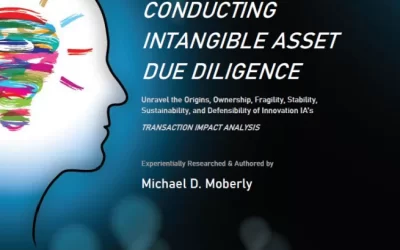Michael D. Moberly August 20, 2012
A recent ruling by the USDC (Northern District of California) will, once again, hopefully serve as impetus for information asset protection management specialists and intellectual property counsel to review the agreements, policies, procedures, and practices to reflect the adage that ’all trade secrets start life as intangible assets, i.e., ideas – intellectual capital!
On June 7, 2012, in FormFactor, Inc. v. Micro-Probe, Inc., this court ruled on a case that, once again, delineates the evidence necessary to support an allegation of trade secret theft.
In February 2010, defendant left FormFactor to work for Micro-Probe, a competitor. Both firms sold and provided support for products used to test the performance of semi-conductors. The companies had some overlapping customers although their products conducted different kinds of performance tests.
While employed by FormFactor, defendant had been authorized to remotely access his employer’s internal system on the laptop provided by his employer as well as a personal home computer. When defendant informed his employer he was leaving to work for Micro-Probe, he returned his company owned laptop. Unfortunately, FormFactor made three procedural errors…
- it made no inquiries about whether the defendant retained any proprietary data/information (files) on his personal home computer,
- neither did FormFactor request that defendant return or delete any (proprietary) materials that he may have acquired while working from home., and in addition, defendant
- never signed any restrictive covenant/agreement while employed by FormFactor.
Shortly after defendant departed FormFactor, at their request, the defendant relinquished his personal (home) computer and other data storage devices for inspection (by FormFactor) to determine if it contained trade secrets or confidential (proprietary) information. This inspection revealed some 4500 files were stored on defendant’s home computer and its storage devices belonging to FormFactor. Following this inspection and comparison to Micro-Probe’s databases and electronic storage system, only one of those (4500) files appeared in Micro-Probe’s possession.
Consequently, the court noted that any party seeking to recover under California’s Uniform Trade Secret Act for misappropriation, in this instance, FormFactor…
- must demonstrate the existence of a trade secret
- must identify the trade secret(s), and
- carry the burden of showing that the (alleged) trade secrets exist.
Further exacerbating FormFactor’s claims in this instance, was that, of the 4,500 files listed, none met the requisite specificity of constituting a trade secret, thus, the blanket assertion that all of the files were ‘confidential or contained a trade secret was rejected.
Also, the USDC ruled that FormFactor’s case omitted the requirements that the plaintiff
- identify each particular trade secret (not just a file that might contain a trade secret), and
- describe the subject matter of the trade secret, and
- establish that a trade secret held independent economic value.
It certainly comes as no surprise that requiring plaintiff’s to openly disclose a trade secret frequently deters companies from pursuing trade secret claims.
The court also said, plaintiff’s broad argument that it spends $50 million a year on R&D failed to establish a connection between (a.) the value of the alleged (contested) trade secrets on the defendants home/personal computer, and (b.) FormFactor’s level of annual spending on R&D.
Finally, the court held that FormFactor had not sufficiently demonstrated that it made reasonable efforts to safeguard its alleged trade secrets in that it…
- never required defendant to sign a non-compete, confidentiality/non-disclosure, or non-solicitation agreement.
- allowed defendant to retain his contact information after his departure from FormFactor.
- authorized defendant and other employees to work from home.
- did not request defendant return any FormFactor data upon tendering his resignation.
Ultimately, FormFactor did not establish the existence of any protectable trade secrets, nor did it demonstrate misappropriation, i.e., improper acquisition or use, under CUTSA. Mere possession of an alleged trade secret by a departing employee, standing alone, does not presume misappropriation.
Too, the single file that defendant appeared to have taken to Micro-Probe was actually a spreadsheet containing non-confidential information. That file was in a format that was common to the industry and not unique to FormFactor. Too, there was no evidence that Micro-Probe ever actually used that documents’ content.
Given the extraordinarily rapid growth of knowledge intensive companies globally, wherein 65+% of most company’s value, sources of revenue, and ‘building blocks’ for growth and sustainability reside in intangible (intellectual capital) assets, this ruling should serve as yet one more testament to how companies should strictly follow the ‘six requisites of trade secrecy’, and put procedures-practices in place to sustain control, use, ownership, and monitor the value, materiality, and possession of its proprietary information and trade secrets!
(This post was inspired by a case summary by GreenbergTraurig, dated August 3, 2012)



